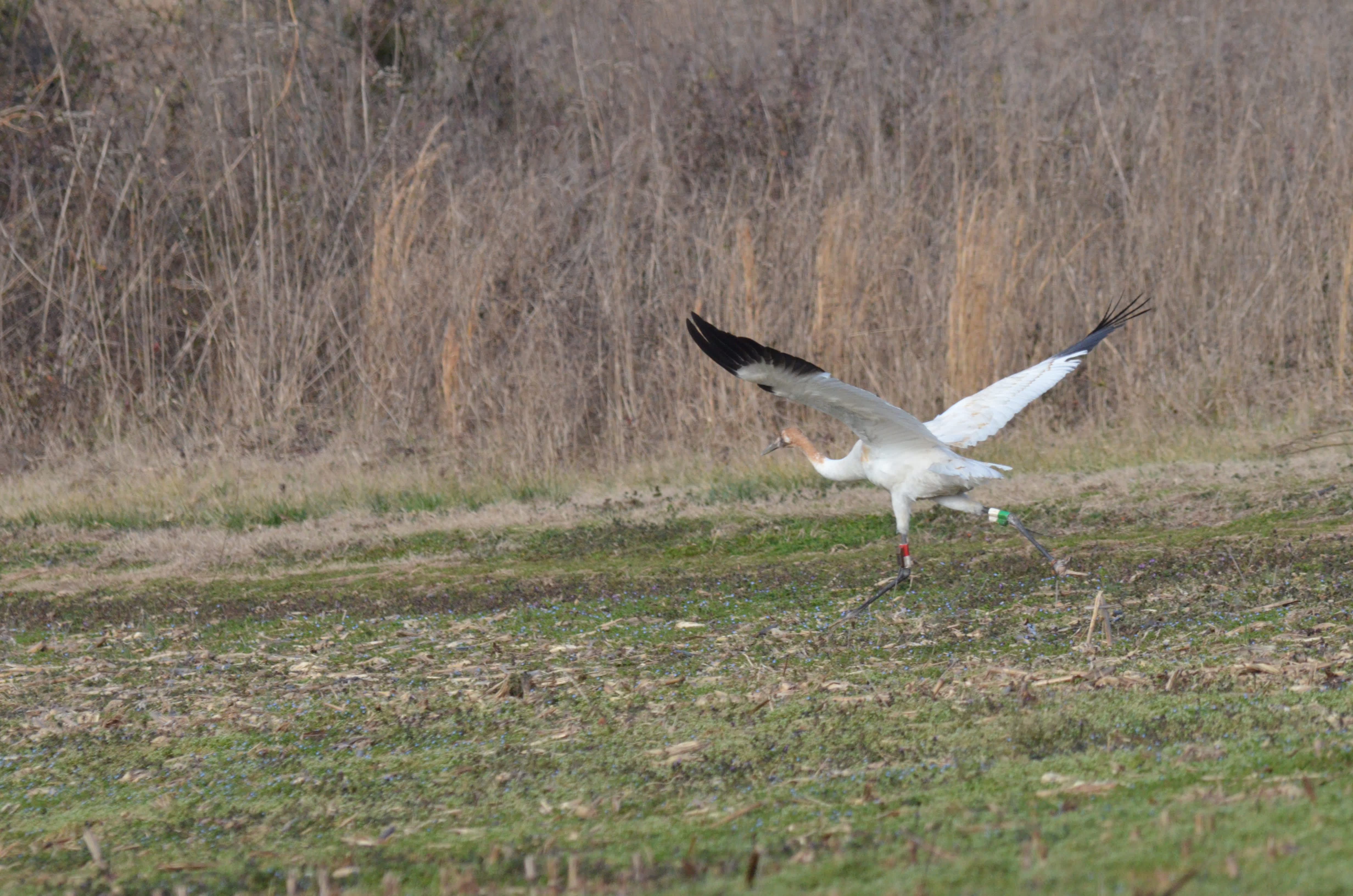Injured Whooping Crane Released Back into the Wild at Hiwassee State Wildlife Refuge in Meigs County, Tennessee
OutdoorHub 02.11.13

Thanks to the helpful veterinarians and wildlife staff from Disney’s Animal Kingdom in Florida, an injured endangered whooping crane is free again, and in the company of other cranes.
The Whooping Crane Eastern Partnership (WCEP) first heard there was a problem with one of the 111 whooping cranes in the Eastern Migratory Population from members of the public who first reported a whooping crane limping around the outskirts of North Miami.
The female crane, #13-12, is part of a special effort to establish an eastern migrating population of whooping cranes. Released directly into the wild on October 2012 at Horicon National Wildlife Refuge, Wisconsin, it linked up with five other young-of-the year birds and migrated together, ending up the furthest south so far of any bird in this population since releases began in 2001.
This is the first time whooping cranes have reached the Everglades, foraging in Hendry County (Southwest of Okeechobee) at remote cattle ranches. In early January, two cranes showed up at the interface of wetlands and suburbia on the eastern side of the Everglades, in Broward and Dade Counties. Members of the public reported that one of the birds was limping. This bird later showed signs of distress, acting listless, with an apparent injury to her right foot.
The partnership team responsible conducted a quick but thorough discussion to determine the best possible outcomes, weighing the risks of capture with the benefits of medical treatment and possible relocation.
“We chose to capture this injured whooping crane, and it has turned out to be the right call,” said Billy Brooks, Whooping Crane Coordinator for the U.S. Fish and Wildlife Service for the Eastern Migratory Population.
“Because of the efforts of Dr. Scott Terrell, DVM, at Disney, and that of the capture team, we were able to get this bird healthy and back out into the wild.”
She was captured on January 26, and transported to Disney’s Animal Kingdom, where her right middle toe was amputated due to an injury and subsequent infection. The veterinarians maintained an isolation protocol, operating in costume without using human voices as they treated the bird.
She remained at Disney and continued to improve until being transported north on Saturday.
“The longer you hold a bird, the tamer it can become,” said Brooks . “We have to keep them as wild as possible, and two weeks in captivity is about as long as we like to keep an injured bird in captivity.”
The crane was released at Hiawassee Wildlife Refuge in Meigs County, Tenn., on Saturday, Feb. 9.
No other whooping crane from this population has ever been captured, transported to a medical facility, treated, and successfully re-released back into the wild over the twelve years of the program. Prior to this case, none had been deemed releasable due to the extent of their injuries.
Whooping cranes were on the verge of extinction in the 1940s. Today, there are only about 600 birds in existence, approximately 445 of them in the wild. Aside from the WCEP birds, the only other migratory population of whooping cranes nests at Wood Buffalo National Park in northern Alberta, Canada and winters at Aransas National Wildlife Refuge on the Texas Gulf Coast. A non-migratory flock of approximately 20 birds lives year-round in the central Florida Kissimmee region, and an additional 28 non-migratory cranes live in southern Louisiana.

